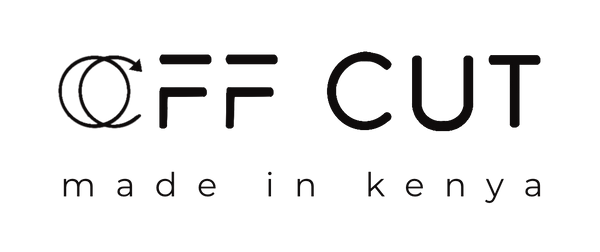
But have you ever stopped to think about how those clothes ended up here — or what happens to the ones no one buys?
Kenya is one of the biggest players in the global second-hand clothing trade. According to the Massachusetts Institute of Technology (MIT), the country imported second-hand clothes and textiles worth over €256 million (KSh38.5 billion) in 2023, making it Africa’s leading buyer of mitumba — the Swahili word for thrift or second-hand.
This trade provides affordable clothes to millions of Kenyans, sustains small businesses, and contributes over Ksh 16 billion (€106 million) to national revenue. But it also comes with its challenges. Many garments, over 30 million items, arrive damaged or made of synthetic fibers that cannot be recycled and eventually end up dumped, landfilled, or burned — worsening Nairobi’s textile waste and pollution crisis (Changing Markets, 2023).

It’s an ecosystem that meets real needs — but also raises tough questions about textile waste, sustainability, and Kenya’s fashion industry’s future.
That’s what makes Second Hand September so powerful. Launched in 2019 by the UK charity Oxfam, this global campaign invites us to hit pause on buying new clothes for one month and explore pre-loved, thrifted, or upcycled alternatives instead.
Why Second Hand September Matters
At its heart, Second Hand September is about keeping clothes in circulation longer — meaning fewer garments end up in landfills and less pressure is put on our planet.
By shopping second-hand, we lower demand for new production, reduce greenhouse gas emissions, and save water and energy that would otherwise be used in manufacturing.
There’s also a social dimension: fast fashion’s low prices often come at the expense of fair wages and safe working conditions for the workers. Choosing second-hand supports a slower, fairer fashion system and challenges overproduction and overconsumption.
We love that this campaign pushes us to rethink how we shop — not just in September, but all year round.
At OFF CUT Kenya, this is what we do every day — sourcing overlooked fabrics from places like Gikomba and transforming them into unique, upcycled pieces.
How OFF CUT plays a part in Second Hand September: From Gikomba To Circular Fashion
Every week, we source fabrics from Nairobi’s markets like Gikomba — often pieces others might ignore or discard. Instead of letting them become waste, we give them new lives: a duvet becomes a crisp men’s shirt, a curtain a stylish blouson jacket, and leftover fabric scraps are pieced together to create bold, one-of-a-kind designs.

By doing this, we extend the life of textiles, cut down on landfill waste, and reduce the need for new production — contributing to a more circular, sustainable fashion industry.
By choosing to turn “trash” into treasure, we’ve seen how powerful small changes can be. You can be part of that change too. It doesn’t take a complete lifestyle overhaul — just a few mindful steps.
How you too can play a part in Second Hand September
Start with a mindset shift
Start by rethinking how you consume fashion. Before buying something new, pause and ask yourself: Do I really need this? Can I find it second-hand? Could I restyle what I already own?
Treasure what you already own
Your closet is already full of possibilities — sometimes all it takes is mixing, matching, or restyling your pieces to create something fresh. Learn to love and rewear what you have instead of constantly chasing new trends.
Shop second-hand pieces
Choosing second-hand first is another simple way to make a difference. Visit Gikomba, Toi, or your local thrift shop and you’ll discover affordable, unique finds while helping keep clothes in circulation.
Repair, reuse, and swap
Don’t be so quick to throw things out. A missing button or a small tear doesn’t have to mean the end of a garment’s life. Learn simple mending skills, repurpose worn-out clothes, or even swap with friends to refresh your wardrobe sustainably.
Support sustainable fashion brands
Support brands like us like OFF CUT Kenya that are committed to slowing down fashion. Every piece you buy from us gives discarded fabrics a second life, keeps clothes out of landfills, and helps grow a more conscious fashion movement.
Shop Our Collections and wear fashion that supports artisans, saves fabric from the dump, and helps heal the planet

